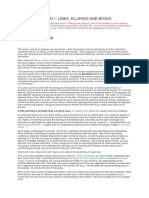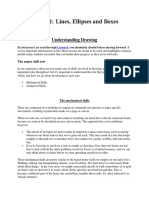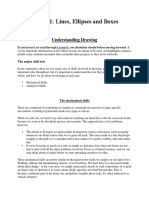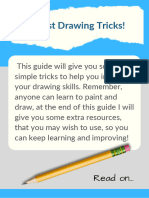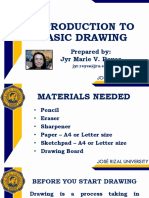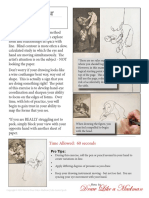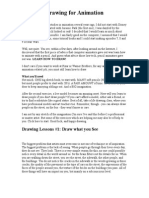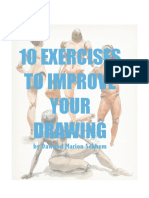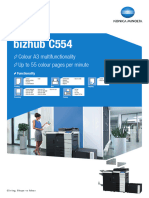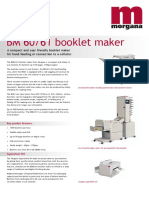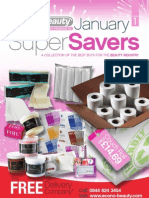So, this first activity we’re going to carry out is starting from real basics, but over the
years of teaching drawing and sketching, one thing that I’ve found that can be an
initial hurdle to get over for students is the ability to draw a straight line. So, we've
got our page set up here, you can see the camera above me just demonstrating
what's happening on the page. So, now, I think the issue that some students have is
really in how we use the arm to draw a straight line. Now, for instance, sometimes
drawing on the page we can be aiming for a straight line but we might use the wrist
too much and as we're doing that straight line we're actually using the wrist far too
much, which, as you can see, is effectively a central point, is a pivot, so is naturally
going to draw curve. So, if any of that comes into play in trying to draw the straight
line, you will end up, will end up with much more curve. Now the same issue comes
if you think of using the elbow, now the elbow is a natural central pivot point, so
again, if there's too much use of the elbow when we're trying to draw these straight
lines that's also going to draw a curve as well. So those are the two main things to
avoid. Now, the main area of the arm that is involved in getting more confident, the
ability to draw straight lines, is actually working much more shoulder, believe it or
not, so as we move the pencil across the page, the fingers actually holding the
pencil, stay very static, very firm, but most of the movement, if you look at what I'm
doing here, most of the movement is actually coming from the shoulder as I go from
left to right, in my case, being right handed. Now, this is quite tiring, quite tiring on
the arm, so a technique to mitigate against that is to rest this part of the hand, almost
the knuckle, the lower part of the hand on the page, so that's resting on the page,
we're going to use primarily the shoulder, primarily the shoulder as we move across
the page, and then the action is coming from the shoulder largely, a small amount of
movement in the wrist, and in the elbow, but mostly from the shoulder, and the
weight of that whole arm is taken by resting the hand on the page, and if you can
see, as we start to move here, we're much more naturally able to get a straight line. I
mean you can practise this initially, here we can go bit faster, sometimes we're going
to be wanting to get quite nice dynamic, smooth lines across the page which gives a
sense of, a dynamic sense to the drawings. Sometimes we might be more
considered and slower, but once you've got used to this you can, obviously then,
when you're drawing, put the pencil onto the paper, for me left to right, again largely
using the shoulder, tiny bit of movement from, from the rist and the elbow but mostly
of the shoulder, taking the weight on the, the back of the hand here, and we can get
that nice straight line across the page, like so. I mean you would have said this in the
drawing examples I showed you, you earlier when you know we've got the
perspective set up, I mean here I'm using an A2 sheet of paper, so that there is a
requirement in this situation to be able to draw quite nice straight fluid lines, across
the A2 piece of paper. Let's have another go, so, this part of the hand resting on the
paper, pencil down and were, just a nice steady action, we're using largely the
shoulder, and we’re moving across the page and there we go. Now, obviously you’ll
be keen and you'll be excited to move on to some of the more exciting drawings that
I showed you at the start, but I do think this is a fundamental activity to get to grips
with first, so, the first activity I'm going to set you, having watched this video, is to go
away, now I'd like you to, to spend, depends how long it takes you to get to grips with
this, but it may be 10 to 15 minute activity for some people, it may be a 30 minute
activity for others, even 40 minutes, it might be something that over the next week
you come back to, 10 minutes here, 10 minutes there, but the first activity I'd like to
set, is you, you set yourself up in a similar setting to myself, you don't need a
�drawing board, just a flat surface, I think for practising the straight lines, I'd suggest
using at least A3 paper, you might use A2 paper, you could do this on A4, but it's
quite good to have a reasonable sized piece of paper start practise this on, and I
would literally revisit the video and get confident at drawing, and if I have another go
here, get confident at drawing these straight lines across the page and you will see,
in the next few stages we go through, how fundamental this will be to successfully
drawing dynamic, good quality, sketches and drawings.
